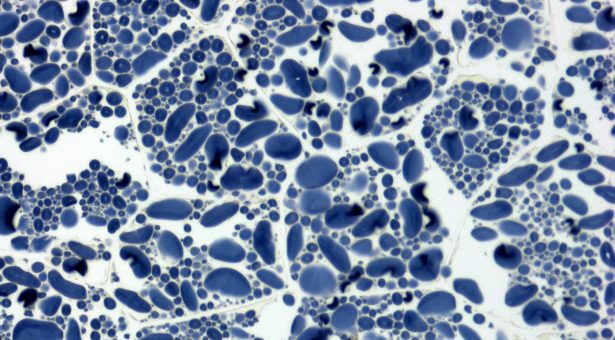Understanding how plants make starch

Starch is the main carbohydrate in our diet. It is a major component of many staple crops, such as cereal grains and potato tubers and is used both directly as a food and is also used to make products such as paper, biodegradable plastics and pharmaceuticals.
In the Harnessing Biosynthesis for Sustainable Food and Health (HBio) Institute Research Programme we aim to undertake research to understand how starch is made and use this knowledge to enhance the quality of starch by improving it’s physical and nutritional properties.
Starch is the primary form of carbohydrate storage in plants, and can be found in the leaves, seeds and storage organs of most plants.
By studying starch biogenesis and its roles in plant metabolism, we can identify pathways and genes which could be modified to improve processing and nutritional qualities of major staple crops. Understanding the how starch granule synthesis initiates in plants, and how their structural and functional properties are determined, will enable us to develop wheat and potato lines with altered starch which can, for example, reduce the glycaemic index (GI), a trait that may help in combating obesity and type-2 diabetes.
We aim to identify genetic variation in wild relatives of wheat that could be useful for improving starch in modern wheat, which can then be tested for their potential to improve the quality of various food and non-food products.
We are working with the Quadram Institute on potato starch to understand the role of beneficial plant compounds, polyphenols, in reducing starch digestibility in the gut to allow us to identify specific forms of polyphenols which reduce the glycaemic index of potato starch for their formulation into healthier processed foods.
Our recent findings include,
- Genes and enzymes that control variation in starch granule size in wheat
- Mutations which change the shape of starch granules, which could be useful for modifying starch viscosity during processing and resistance to digestion in the gut. We are testing these with the Quadram Institute.
